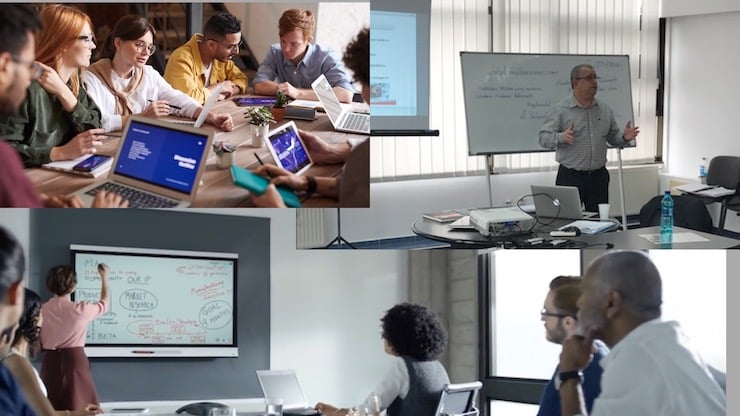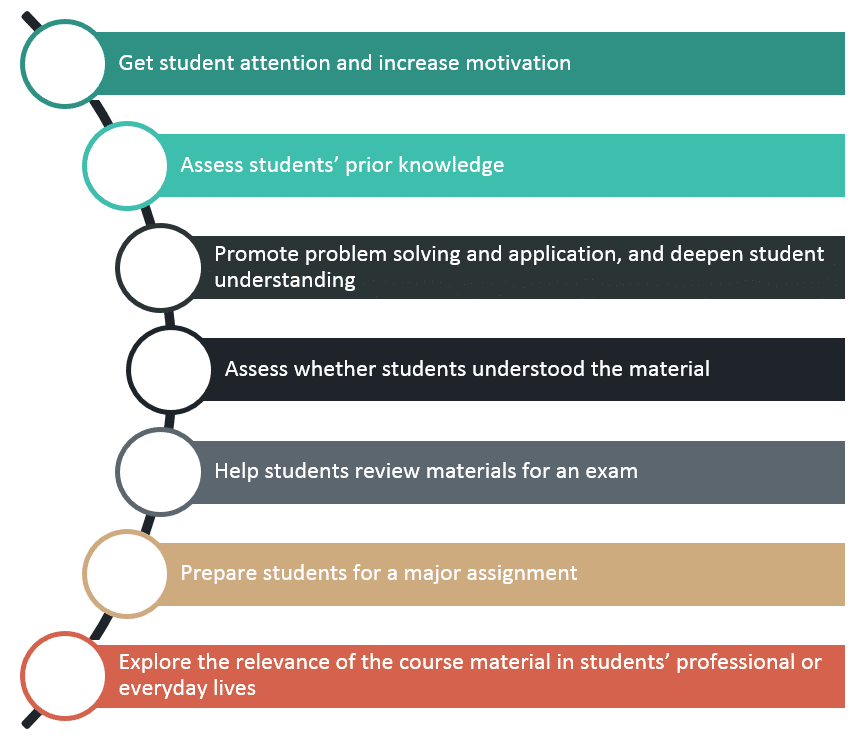
Tell me and I forget. Teach me and I remember. Involve me and I learn. (Benjamin Franklin)
We live in an extremely competitive environment where learning is more dynamic than ever, and lifelong learning has a special role in entrepreneurial success, employee motivation, and performance. This convinced me there is a need for an active approach to learning. I, like many others, consider that learning only in classrooms is an outdated method.
Research has shown that participants in a classroom can lose focus on the subject in 15-20 minutes, research that I was able to confirm through my experience as a trainer.
This is already a big challenge that complicates the situation a little because there is a real need to put the learning process in the online environment, or to use “blended learning”. Learning technology and methods are constantly evolving at an extraordinary speed. One of the biggest challenges for me as a trainer is to effectively address the learning needs of my trainees. Certainly, this can only be done by using the most appropriate technology and learning methods. I believe the key to success is stimulation of an active learning environment.
The active learning method is the exact opposite of passive learning this being defined as “a method of learning in which students are actively or experientially involved in the learning process and where there are different levels of active learning, depending on student involvement.” (Bonwell & Eison 1991)
In short, active learning is the opposite of passive learning and puts the responsibility of learning on those who learn. I, as a trainer, am only a facilitator who acts as a guide for my trainees whom I encourage to learn by themselves through a series of active learning methods. It is known that there are a number of important advantages to active learning, all having to do with motivating the students or trainees. I think that by promoting active learning, first of all, my trainees’ creative thinking and their collaborative skills develop.
Queen’s University says active learning activities can be used to:

During the 1960s, Edgar Dale theorized that learners retain more information by what they “do” as opposed to what is “heard”, “read” or “observed” (Cone of Experience).

According to Dale’s research, the least effective method at the top, involves learning from information presented through verbal symbols, i.e., listening to spoken words. The most effective methods at the bottom, involves direct, purposeful learning experiences, such as hands-on or field experience. Direct purposeful experiences represents reality or the closet things to real, everyday life…’action-learning’ techniques result in up to 90% retention. People learn best when they use perceptual learning styles. (Dale’s Cone of Experience, Heidi Milia Anderson)
Another major challenge for me is to make the lessons as attractive and applicable as possible for my adult trainees. I often resort to several teaching strategies, all of which I recommend to all trainers working with adults.
Keep It Relevant – because adult trainees truly latch onto lessons they feel are relevant, I remind them that the training course they attend will provide them with the necessary skills in their career. My experience in the respective field has proven this over and over again. They have to understand how the skills they learn will improve their daily lives.
Student Backgrounds – I rely on the fact that students have life experiences and my educational content must reflect the level of education they have completed.
Emotion Into Lessons – I integrate emotions into my courses through storytelling based on real-life demands. My presentations have a lot of visual events with little text, and I attempt to always weave-in interactions.
Feedback – Always I offer feedback especially if trainees make a mistake and I offer an alternative approach or explanation if the trainees don’t understand something.
Encourage Exploration – In my teaching activity, I design all the theoretical and practical activities to give trainees the chance to learn on their own. To let trainees integrate their own personal experience into what they are learning, the central theme of a lesson is always a question that needs to be answered. My goal is for the trainees to reach the central theme of the lesson by themselves.
Five active learning methods used by me
Active learning encourages trainees to collaborate, and therefore, be more productive.
1. Virtual Classrooms / Virtual Learning Environment
A virtual classroom is a teaching and learning environment where participants can interact, communicate, view and discuss presentations, and engage with learning resources while working in groups, all in an online setting. The medium is often through a video conferencing application that allows multiple users to be connected at the same time through the Internet, which allows users from virtually anywhere to participate. (Techopedia).
Virtual classrooms make online learning more engaging and it’s a definite must-have for any eLearning platform. Teaching and learning in a virtual classroom require a redesign of the instructional model. I like to use a number of tools to guide the learning process such as: video conferencing, online whiteboard for real-time collaboration, and instant-messaging tools.
2. Role-Playing
I consider Role-Playing one of the most effective approaches founded on active learning methods, although it’s one of the least understood training activities. Role-Playing is often misused by some trainers (eg. when situations are highly charged, role-playing tends to ruin the learning experience). I like to simulate real-life situations and create an efficient environment for measuring performance (eg. a problem statement where the trainees are asked to describe a problem, offer alternative explanations for its causes, and come up with a plan of action).
3. Brainstorming
Brainstorming is a staple methodology for any problem-solving activity where trainees generate as many ideas as possible and post them on board. The purpose of brainstorming in training is to encourage trainees to think creatively and critically, and should be no evaluation of ideas in the first stage. During the responses evaluation, the second stage of brainstorming, trainees should think critically about the ideas generated. I recommend “Guide To Brainstorming For Trainers“.
4. Jigsaw
The Jigsaw is one of my favorites active learning methods because it splits trainees into groups, and it focuses on listening, speaking, co-operation, reflection, and problem-solving skills.
The basic idea is very simple: students are divided into groups which all have their own research topic to study. After research each topic group is split in such a manner that new groups have a single member from each of the old topic groups. After the new groups have been assembled each topic expert is resonposible for integrating the knowledge of his/her topic specific knowledge into the understanding of the new group he/she is in. This is where the name for the method comes from: students are organized like pieces in a jigsaw to form different kind of groups, where each student (piece) must be part of the solution to the jigsaw puzzle. (Jigsaw by Kai Hakkarainen)
5. The Flipped Classroom
A Flipped Classroom is a type of blended learning that reverses the traditional learning environment by delivering instructional content, often online. This is where trainees are introduced to content at home via technology, and practice working through it in the classroom with questions and background knowledge. In the classroom, time is dedicated to discussions, interactive exercises, and independent work.
The Flipped Classroom enables me to improve the classroom experience in a number of ways: allow trainees to consume lecture materials at their own pace, and trainees apply new knowledge using the trainer (on me) as a resource. For more information about the Flipped Classroom, I recommend “The Practical Guide to Flipping Your Classroom“.
The future is fascinating and the possibilities endless because there are still many other methods for active learning: Scavenger Hunts, Online Discussion Boards, Game-Based Learning, Self-Learning, Design Thinking, etc.
We must not forget that technology advances incessantly, and learning methodologies evolve with it. Professional trainers have to adapt and to keep up.
For anyone who is interested in active learning methods.
I would love to hear from you which of the active learning methods have you experienced as a trainee or used as a trainer.
Source:
- „10 Active Learning Methods for Super Engaged Corporate Learners”, by Nikos Andriotis
- „Dale’s Cone of Experience”, Heidi Milia Anderson, Ph.D., Assistant Dean for Education Innovation, University of Kentucky
- Techopedia, https://www.techopedia.com
- “Guide To Brainstorming For Trainers“, http://thetrainingworld.com
- „Jigsaw”, Kai Hakkarainen
- “The Practical Guide to Flipping Your Classroom”
- “Guide To Brainstorming For Trainers”